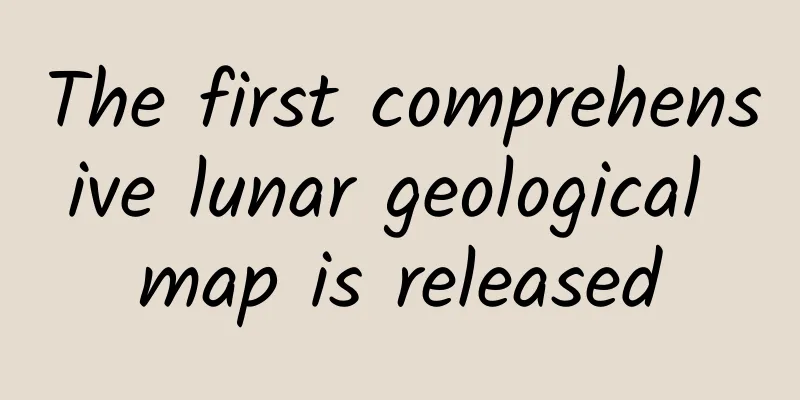The first comprehensive lunar geological map is released

|
According to the Physicists' Organization website on the 22nd, American scientists today released the first comprehensive lunar geological map to date. They said that this comprehensive map is expected to help us further understand the 4.5 billion-year history of our closest space neighbor and provide reference for future human lunar exploration and lunar landing missions. Scientists from the U.S. Geological Survey (USGS), the National Aeronautics and Space Administration (NASA) and the Lunar and Planetary Institute worked together to draw the first complete geological map of the entire lunar surface and classify it uniformly. The new lunar map, called the "Unified Geological Map of the Moon", shows the geology of the moon at a scale of 1:5000000 and is the final blueprint of the geology of the lunar surface to date. To create the new digital map, scientists used information from six Apollo-era regional maps, as well as updated information from recent satellite missions to the moon. In addition, they redrawn existing historical maps of the moon to make them consistent with modern data sets. In addition to merging old and new data, USGS researchers also unified the description of lunar stratigraphy (layers of rock), resolving issues with rock names, descriptions and ages that were sometimes inconsistent in previous maps. In addition, the elevation data of the lunar equatorial region comes from the stereoscopic observation data collected by the "Terrain Camera" on the "Earth Science and Engineering Explorer" (SELENE) satellite led by the Japan Aerospace Exploration Agency; the terrain data of the lunar North and South Poles are supplemented by data provided by NASA's "Lunar Orbiter Laser Altimeter". "This map is the culmination of a decade-long project," said Corey Fortz, a USGS geologist and lead author of the new map. "It will connect exploration data from specific locations on the Moon with data from other places on the lunar surface, and will help humans with future lunar exploration and landing missions. It will also be important to the international scientific community, educators and the general public." "People have always been fascinated by the moon and are curious about when we might go back there, and this map can provide an informative resource for future NASA missions," said Jim Reilly, current USGS director and former NASA astronaut. The public can now view and download the map at the Unified Geological Map of the Moon website. |
<<: Oil prices are falling, so why did they fall to negative levels?
>>: "The ugliest animal in the world"? No, it's a great miracle of evolution
Recommend
Major breakthrough! Musk announces first human brain chip implant
There is new news about Musk’s brain-computer int...
10 new media tools that can improve work efficiency by 60%
I coined the term "device merchant" in ...
How does product operation improve user retention rate?
I saw a very cute metaphor on Zhihu some time ago...
What is it like to have a good figure? Let's meet this "water bird model"
What is it like to be in good shape? Probably amo...
How much does it cost to be an agent of Weinan Attendance Mini Program? What is the price of Weinan Attendance Mini Program agent?
What is the price of Weinan Attendance Mini Progr...
Alibaba IPO: 5 big winners and 5 big losers
According to foreign media reports, Alibaba offic...
What is the difference between a pillow that costs tens of dollars and one that costs thousands of dollars? Here are some tips for choosing the right pillow →
Did you sleep well last night? Today is March 21s...
4 misunderstandings about bidding promotion!
After working in SEM for so many years, I found t...
Chen Jiayong's 100th birthday: A selfless heart brings a broad world
"The furnace fire illuminates the sky and th...
Fantastic mammatus clouds appear in the sky, people with claustrophobia should beware
Two days ago, a cloud appeared in the lead-gray s...
Is this the first time I heard that chestnuts can be eaten raw? Yes! And it’s really delicious!
When it comes to chestnuts, many people first thi...
One-minute science popularization | Searching for the mystery of the sinking of the Titanic, which iceberg was the culprit?
What are ocean currents? Ocean currents, also kno...
Unmanned retail stores look great, but the so-called low cost is not true?
Unmanned convenience stores in Shanghai, Hangzhou...
Since my country’s artificial sun keeps breaking records, why can’t controlled nuclear fusion light up a lamp?
At the beginning of this year, the Chinese Academ...
Weibo advertising creative optimization skills, placement and traffic generation
I believe most advertisers are very familiar with...









